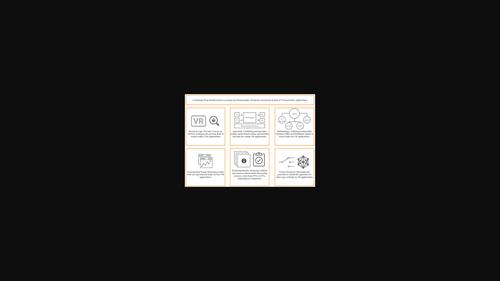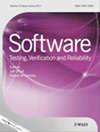Exploiting deep reinforcement learning and metamorphic testing to automatically test virtual reality applications
IF 1.2
4区 计算机科学
Q3 COMPUTER SCIENCE, SOFTWARE ENGINEERING
引用次数: 0
Abstract
Summary Despite the rapid growth and popularization of virtual reality (VR) applications, which have enabled new concepts for handling and solving existing problems through VR in various domains, practices related to software engineering have not kept up with this growth. Recent studies indicate that one of the topics that is still little explored in this area is software testing, as VR applications can be built for practically any type of purpose, making it difficult to generalize knowledge to be applied. In this paper, we present an approach that combines metamorphic testing, agent‐based testing and machine learning to test VR applications, focusing on finding collision and camera‐related faults. Our approach proposes the use of metamorphic relations to detect faults in collision and camera components in VR applications, as well as the use of intelligent agents for the automatic generation of test data. To evaluate the proposed approach, we conducted an experimental study on four VR applications, and the results showed an of the solution ranging from 93% to 69%, depending on the complexity of the application tested. We also discussed the feasibility of extending the approach to identify other types of faults in VR applications. In conclusion, we discussed important trends and opportunities that can benefit both academics and practitioners.

利用深度强化学习和变形测试来自动测试虚拟现实应用
尽管虚拟现实(VR)应用的快速增长和普及,为通过VR处理和解决各个领域的现有问题提供了新的概念,但与软件工程相关的实践并没有跟上这种增长。最近的研究表明,在这一领域仍然很少探索的主题之一是软件测试,因为VR应用程序可以为几乎任何类型的目的而构建,因此很难概括应用的知识。在本文中,我们提出了一种结合变形测试、基于智能体的测试和机器学习的方法来测试VR应用程序,重点是发现碰撞和相机相关的故障。我们的方法提出了在VR应用中使用变形关系来检测碰撞和相机组件的故障,以及使用智能代理来自动生成测试数据。为了评估所提出的方法,我们对四种VR应用进行了实验研究,结果表明,根据测试应用的复杂性,解决方案的比例从93%到69%不等。我们还讨论了扩展该方法以识别VR应用中其他类型故障的可行性。最后,我们讨论了对学术界和实践者都有利的重要趋势和机会。
本文章由计算机程序翻译,如有差异,请以英文原文为准。
求助全文
约1分钟内获得全文
求助全文
来源期刊

Software Testing Verification & Reliability
工程技术-计算机:软件工程
CiteScore
3.70
自引率
0.00%
发文量
34
审稿时长
>12 weeks
期刊介绍:
The journal is the premier outlet for research results on the subjects of testing, verification and reliability. Readers will find useful research on issues pertaining to building better software and evaluating it.
The journal is unique in its emphasis on theoretical foundations and applications to real-world software development. The balance of theory, empirical work, and practical applications provide readers with better techniques for testing, verifying and improving the reliability of software.
The journal targets researchers, practitioners, educators and students that have a vested interest in results generated by high-quality testing, verification and reliability modeling and evaluation of software. Topics of special interest include, but are not limited to:
-New criteria for software testing and verification
-Application of existing software testing and verification techniques to new types of software, including web applications, web services, embedded software, aspect-oriented software, and software architectures
-Model based testing
-Formal verification techniques such as model-checking
-Comparison of testing and verification techniques
-Measurement of and metrics for testing, verification and reliability
-Industrial experience with cutting edge techniques
-Descriptions and evaluations of commercial and open-source software testing tools
-Reliability modeling, measurement and application
-Testing and verification of software security
-Automated test data generation
-Process issues and methods
-Non-functional testing
 求助内容:
求助内容: 应助结果提醒方式:
应助结果提醒方式:


